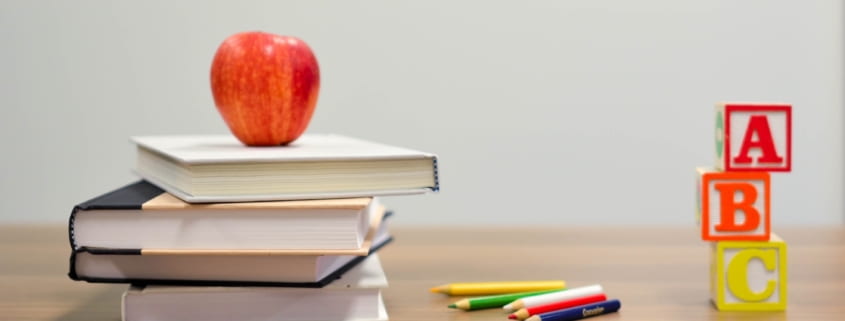No More Corporal Punishment
By Nicole Eng Wei Quah (’21), Celine Lee Ka Leen (’24), and Seow Wei-Ming Luke (’24).
Although the current generation of young parents and Gen Xers are said to be less likely to spank their children [1], corporal punishment is still used in Singaporean schools. Do we really want to see the use of violence normalised in our educational institutions in today’s society?
Corporal punishment, it seems, is very much prevalent in Singaporean schools today. While the Ministry of Education does not release statistics on the number of secondary school students that were subjected to corporal punishment, cases of corporal punishment are frequently discussed on internet forums [2], tabloid articles, and other platforms. While these punishments exist in both primary and secondary schools, our op-ed focuses on the latter. At this point, it is also essential to point out that only male pupils are caned in school [3].
The United Nations Committee on the Rights of the Child defines corporal punishment as “any punishment in which physical force is used and intended to cause pain or discomfort, however light.” [4] This includes the common punishment of spanking pupils on the hand with a whip or stick, as well as slapping, biting, or even kicking. [4] It is often believed that physical discipline keeps children in line, increases their academic performance, and prevents them from developing into “unruly and uncontrollable citizens” [5].
As a colonial relic of the British legal system used to control students and to ultimately ensure compliance [6], corporal punishments in Singaporean schools perpetuate many negative aspects of our colonial history. Therefore, we argue that this archaic, ineffective, and immoral practice needs to go.
The Long-Term Consequences of Corporal Punishment
There is little evidence that physical punishment works: in fact, studies have found that the use of physical force leads to an unconducive learning atmosphere. [7] Physical punishment causes students to participate less in class [7] and makes them want to escape from classrooms [8]. Moreover, it creates tension within the teacher-student relationship [7], worsens students’ academic performances, and increases their likelihood of dropping out of school. [8]
While corporal punishment can sometimes increase discipline in the short-term, the use of physical force extracts a heavy toll in the long-term. [9] Corporal punishment can cause children to feel inferior to their peers, leading to the development of antisocial behaviors such as lying and acting impulsively. [10] Children may also become more defensive and aggressive, as well as have a higher tendency to engage in dating violence later on in life [11], demonstrating the lasting effects of corporal punishment.
Maintaining Discipline in Schools Without Caning
Character building in primary, secondary, and tertiary institutions should focus on encouraging students to learn from their mistakes and change their behavior accordingly. According to research conducted by the Society for Adolescent Medicine [12], corporal punishment is ineffective in achieving these goals, and has been described as being “unproductive, nullifying, and punitive.” Given the many negative consequences of using corporal punishment, how can we teach children to learn from their mistakes and correct their behaviour without inflicting physical pain?
In her 2015 article, Simuforosa [9] theorises four alternative disciplinary methods to corporal punishment. First, teachers should develop strategies to create a better learning environment, such as by setting rules on appropriate classroom behaviour. Next, students should have a stake in deciding these rules so as to increase “ownership of their learning and pride in their participation,” which will motivate them to behave more responsibly. Thirdly, teachers and students should respect each other and teachers should exhibit care, especially in communicating their expectations. Lastly, parents and teachers should work together – parents can encourage their children to abide by school rules and “accept responsibility for any misconduct on their part.”
All in all, schools should acknowledge that children cannot and should not be forced to change their behaviour through physical punishment; instead, we must emphasise communication and motivation [13].
Corporal punishment need not be a hallmark of a stellar education system or a disciplined, effective workforce. There are many Asian cities with excellent education systems that do not use corporal punishment. One example is Hong Kong, which ranked second in the 2015 OECD global school rankings [14] despite corporal punishment being banned in their schools and childcare centers [15].
Moving forward, school students should not have to fear the use of corporal punishment in schools. In fact, by banning corporal punishment, we provide students with better learning environments, enabling them to improve their academic performance.
In conclusion, to uphold the quality of education and defend children’s rights, corporal punishment needs to be banned in schools. Schools can create lasting change by using alternative forms of discipline that emphasises enhancing communication to improve student motivation and classroom dynamics.
Endnotes
- Perry, Susan. “Millennials and Gen Xers Are Less Likely to Spank Their Children than Previous Generations, U of M Researchers Find,” MinnPost, July 28, 2020. https://www.minnpost.com/second-opinion/2020/07/millennials-and-gen-xers-are-less-likely-to-spank-their-children-than-previous-generations-u-of-m-researchers-find/.
- Chin, Felicia. “Singapore Student to Be Publicly Caned for Being Late!,” January 12, 2012. https://sg.theasianparent.com/singapore-student-to-be-publicly-caned-for-being-late.
- Mokhtar, Faris. “Explainer: Can Students Be Caned in Schools and Can Parents Take Action against Educators?” TODAYonline, September 6, 2019. https://www.todayonline.com/singapore/explainer-can-students-be-caned-schools-and-can-parents-take-action-against-educators.
- Commissioner for Human Rights, “Children and Corporal Punishment: ‘The Right Not to Be Hit, Also a Children’s Right’.” Issue Paper (Commissioner for Human Rights, January 2008).
- Ngussa, Baraka Manjale, and Samwel Mdalingwa. “Students’ Perception on Corporal Punishment and Its Effect on Learning: A Case of Secondary Schools in Babati Rural District, Tanzania.” Mediterranean Journal of Basic and Applied Sciences 1, no. 1 (December 7, 2017): 86.
- Farrell, Colin. “Corporal Punishments in Singapore Schools,” Research, World Corporal Punishment Research, 2019. https://www.corpun.com/counsgs.htm.
- Akhtar, Saeeda, Ghafoor Abdul, and Abudul Ghafoor Awan, “The Impact of Corporal Punishment on Students’ Performance in Public Schools.” Global Journal of Management, Social Sciences and Humanities 4, no. 3 (July 1, 2018): 606–21.
- Ngussa, Baraka Manjale, and Samwel Mdalingwa. “Students’ Perception on Corporal Punishment and Its Effect on Learning: A Case of Secondary Schools in Babati Rural District, Tanzania.” Mediterranean Journal of Basic and Applied Sciences 1, no. 1 (December 7, 2017): 84.
- Simuforosa, Magwa. “Prohibition and Elimination of Corporal Punishment: What Are the Workable Alternative Disciplinary Methods?” International Advanced Journal of Teaching and Learning 1, no. 1 (2015): 1–6.
- Khan, Mudasir, Amir Zada Asad, Shakeel Ahmed, and Imran Ahmed Sajid. “Students’ Perspective on Corporal Punishment: A Case Study of High Schools Students in Peshawar, Khyber Pakhtunkhwa, Pakistan.” Pakistan Journal of Criminology 6, no. 1 (2014): 103.
- Ngiam, Xin Ying, and Serena S. W. Tung, “The Acceptability of Caning Children in Singapore: The Fine Line Between Discipline and Physical Maltreatment.” Journal of Developmental and Behavioral Pediatrics 37, no. 2 (March 2016): 158–63. https://doi.org/10.1097/DBP.0000000000000247.
- Greydanus, Donald E, Helen D. Pratt, C. Richard Spates, Anne E. Blake-Dreher, Marissa A. Greydanus-Gearhart, and Dilip R. Patel. “Corporal Punishment in Schools.” Journal of Adolescent Health 32, no. 5 (2003): 385–93. https://doi.org/10.1016/s1054-139x(03)00042-9.
- Akhtar, Saeeda, Ghafoor Abdul, and Abudul Ghafoor Awan, “The Impact of Corporal Punishment on Students’ Performance in Public Schools.” Global Journal of Management, Social Sciences and Humanities 4, no. 3 (July 1, 2018): 606–21.
- “Hong Kong Runs Second in Global School Rankings, OECD Says.” South China Morning Post, May 14, 2015. https://www.scmp.com/news/hong-kong/education-community/article/1796084/hong-kong-runs-second-global-school-rankings-oecd.
- Chan, Wing-Cheong, “Legal Protection of Minors: Experiences of Four Common Law Jurisdictions in Asia.” Routledge Handbook of Families in Asia, 1st edition, edited by Stella R. Quah. Abingdon: Routledge, 2015: 437.




Leave a Reply
Want to join the discussion?Feel free to contribute!